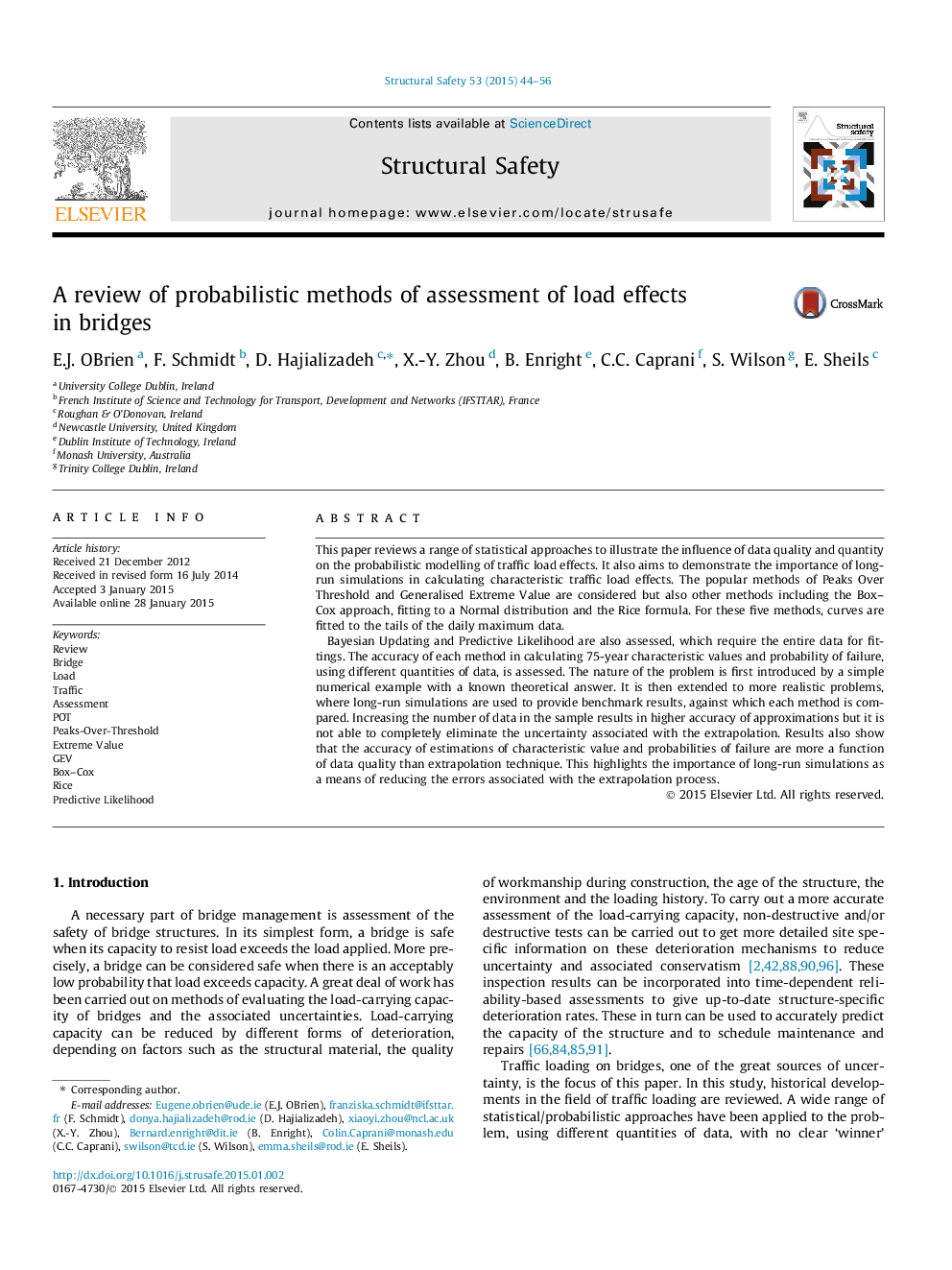| Article ID | Journal | Published Year | Pages | File Type |
|---|---|---|---|---|
| 307510 | Structural Safety | 2015 | 13 Pages |
•Seven alternative methods of statistical inference are reviewed.•None of the methods gives an accurate inference with 1000 days of data.•A sophisticated traffic load modelling algorithm is used to test the methods.
This paper reviews a range of statistical approaches to illustrate the influence of data quality and quantity on the probabilistic modelling of traffic load effects. It also aims to demonstrate the importance of long-run simulations in calculating characteristic traffic load effects. The popular methods of Peaks Over Threshold and Generalised Extreme Value are considered but also other methods including the Box–Cox approach, fitting to a Normal distribution and the Rice formula. For these five methods, curves are fitted to the tails of the daily maximum data.Bayesian Updating and Predictive Likelihood are also assessed, which require the entire data for fittings. The accuracy of each method in calculating 75-year characteristic values and probability of failure, using different quantities of data, is assessed. The nature of the problem is first introduced by a simple numerical example with a known theoretical answer. It is then extended to more realistic problems, where long-run simulations are used to provide benchmark results, against which each method is compared. Increasing the number of data in the sample results in higher accuracy of approximations but it is not able to completely eliminate the uncertainty associated with the extrapolation. Results also show that the accuracy of estimations of characteristic value and probabilities of failure are more a function of data quality than extrapolation technique. This highlights the importance of long-run simulations as a means of reducing the errors associated with the extrapolation process.
